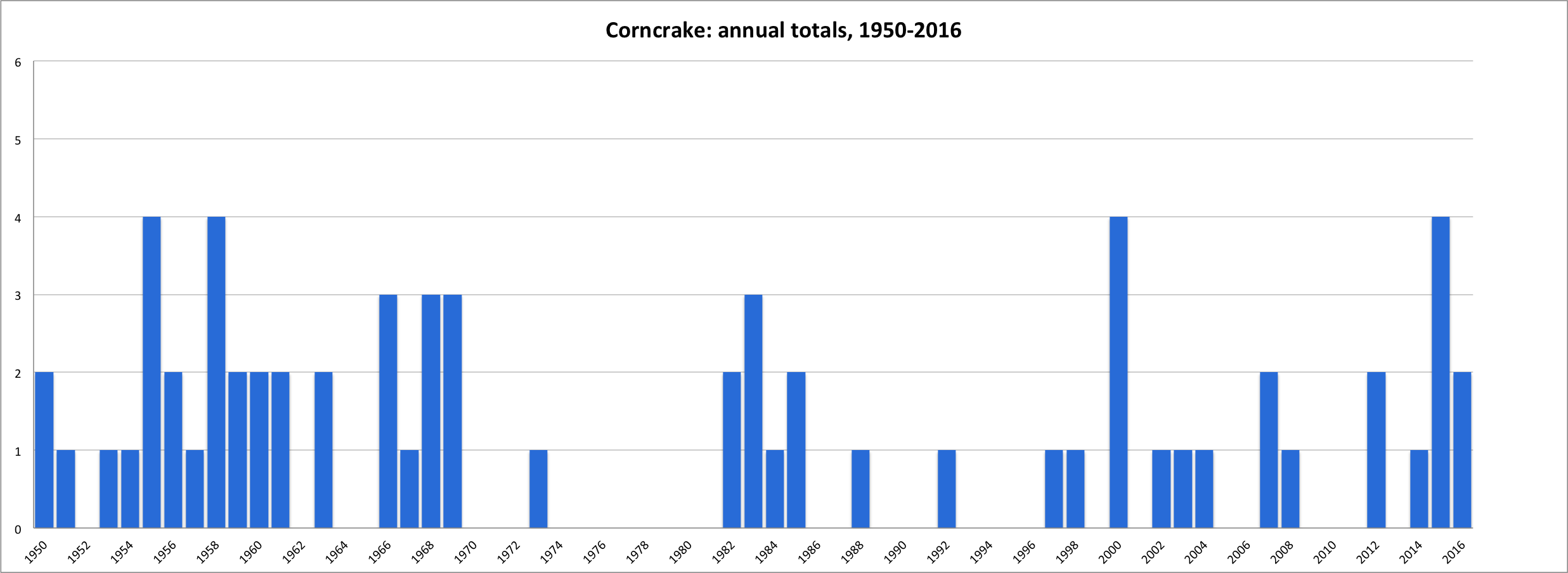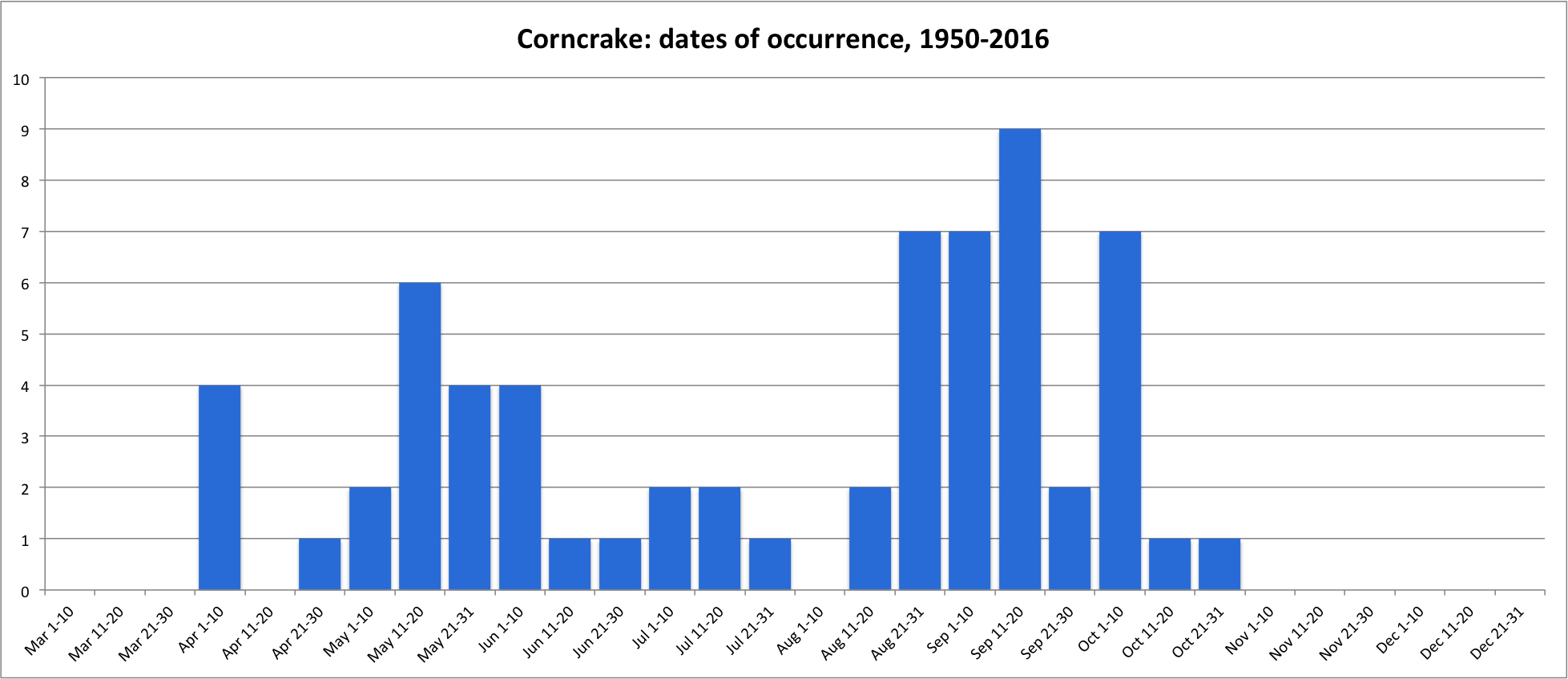Corn Crake Crex crex
The return of Corn Crakes to Lincolnshire as a breeding species became a possibility when the species was identified as a priority action in the UK Biodiversity Action Plan. In 2001, a joint project – involving Natural England, the RSPB and the Zoological Society of London and, more recently, Pensthorpe Conservation Trust – was set-up to reintroduce corncrakes to England, at the RSPB’s Nene Washes nature reserve in Cambridgeshire (Carter and Penbery 2004). At the start 30 juvenile captive-bred Corncrakes were imported from Germany in two batches in 2001 and 2002 and transferred to breeding and wintering pens at Whipsnade Wild Animal Park. In 2003 over 140 eggs were laid and as a result, releases began in earnest and 52 captive-bred juveniles were released in 2003. Subsequently corncrakes bred at the Nene Washes for the first time for many decades in 2004.
In Lincolnshire, four Corncrakes were recorded in 2015, the most since 2000. The next year, 2016, a calling male was heard near Long Sutton on May 16th-20th, and in 2017 another was heard calling and recorded during June-July near Boston; it was also videoed on a trail camera. The annual average for the past 30 years has been just 0.7 birds. There has been no proof of breeding in modern times, but in the light of the introduction scheme on the Nene Washes and the presence of calling birds in 2014-17 there is some optimism for their return before too long. There have been several autumn records after the end of September in the period from 1950, including October 8th 2007, October 10th 1992 and, the latest date of all, one calling at Gibraltar Point on 24th October 1982.


References
Carter, I. and Newbery, P. (2004). Reintroduction as a tool for population recovery of farmland birds. Ibis 146 (Suppl 2): 221-229.
(Account prepared May 2018, updated March 2019 and September 2022 with reference to the new Birds of Lincolnshire (2021) October 2022).

